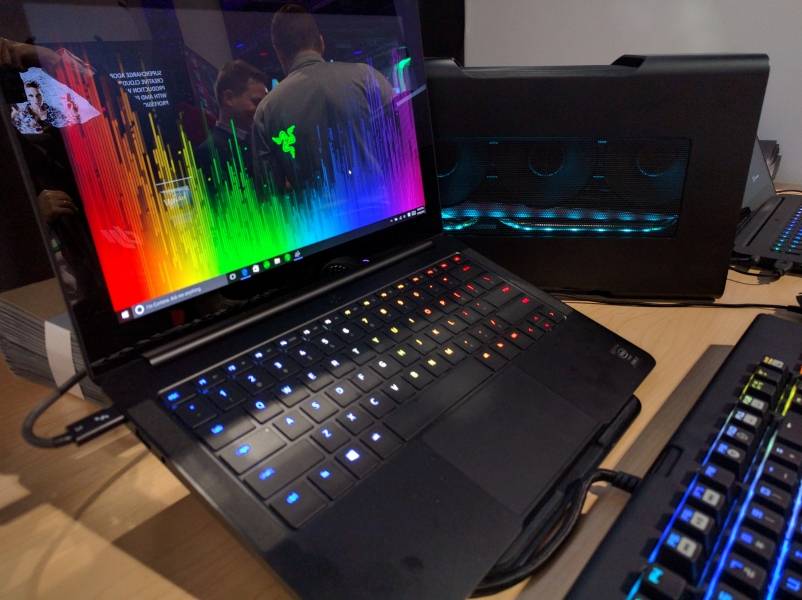Large, beefed up desktop PC's have long appealed to gamers wanting the best in graphics performance. However, notebook PC's have been catching up fast in graphics performance, making them appealing to gamers wanting portability. But what if you could have your cake and eat it, too?
Thunderbolt 3 allows gamers to enjoy the portability of their gaming notebook PC, but when back home they can connect to a Thunderbolt-based external graphics station to enjoy accelerated graphics performance. Razer demonstrated this at NAB 2016 with the Razer Blade Stealth gaming ultrabook, and Razer Core external desktop graphics enclosure.
With the Razer Blade Stealth, you get to enjoy an amazingly thin laptop that supports a 4K resolution, 100% Adobe RGB touch display; fast PCIe SSD drives; and customizable LED color keyboard lighting to highlight keyboard shortcuts and controls of any game. With Thunderbolt 3, not only can you connect the fastest Thunderbolt 3 (40 Gb/s) or USB 3.1 Gen 2 (10 Gb/s) storage devices and network adapters, you can connect two 4K displays for intense multi-screen game action.
What makes the Razer Blade Stealth even more unique is the ability to connect the Razer Core using Thunderbolt 3 and all of a sudden you have access to the latest AMD- and NVidia-based graphics cards to get graphics performance way beyond what's available from the Intel HD Graphics 520 built into the Blade Stealth. The Razer Core also serves as a docking station with four USB 3.1 Gen 1 (5 Gb/s) ports, as well as Gigabit Ethernet, DisplayPort 1.2, HDMI 1.4, and DVI connectivity.
If you want a larger screen and a built-in NVIDIA GeForce GTX 970M GPU, Razer now offers The New Razer Blade, which like the Razer Blade Stealth has Thunderbolt 3 and can take advantage of the Razer Core.
 GTrusted
GTrusted
























